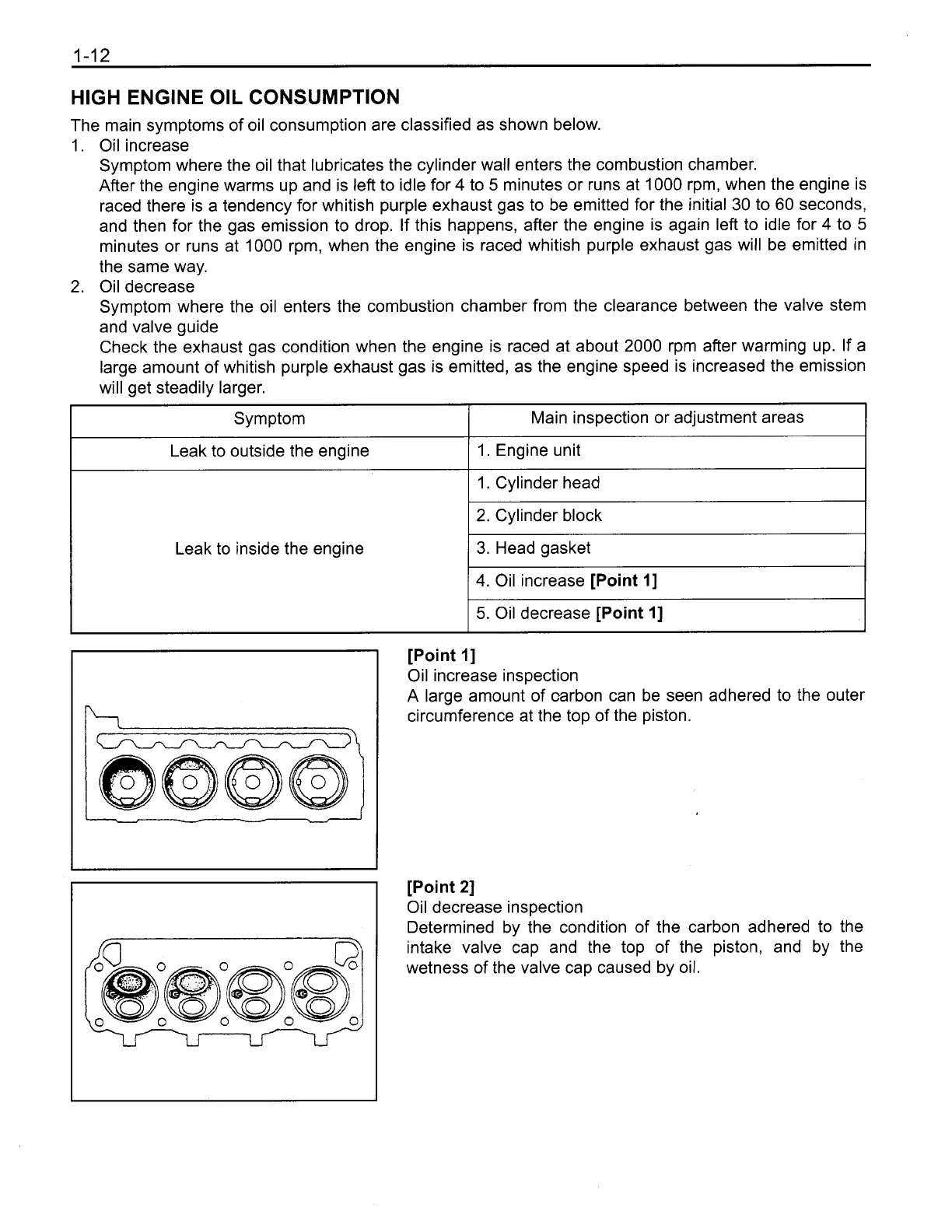HIGH ENGINE OIL CONSUMPTION
The main symptoms of oil consumption are classified as shown below.
1. Oil increase
Symptom where the oil that lubricates the cylinder wall enters the combustion chamber.
After the engine warms up and is left to idle for
4
to
5
minutes or runs at 1000 rpm, when the engine is
raced there is a tendency for whitish purple exhaust gas to be emitted for the initial 30 to 60 seconds,
and then for the gas emission to drop. If this happens, after the engine is again left to idle for
4
to
5
minutes or runs at 1000 rpm, when the engine is raced whitish purple exhaust gas will be emitted in
the same way.
2. Oil decrease
Symptom where the oil enters the combustion chamber from the clearance between the valve stem
and valve guide
Check the exhaust gas condition when the engine is raced at about 2000 rpm after warming up. If a
large amount of whitish purple exhaust gas is emitted, as the engine speed is increased the emission
will get steadily larger.
I
1. Cylinder head
Symptom
Leak to outside the engine
Main inspection or adjustment areas
1. Engine unit
Leak to inside the engine
I
1
3. Head gasket
I
2.
Cylinder block
1
4.
Oil increase
[Point
I]
I
I
1
5.
Oil decrease
[Point
I]
I
[Point
I]
Oil increase inspection
A large amount of carbon can be seen adhered to the outer
circumference at the top of the piston.
[Point
21
Oil decrease inspection
Determined by the condition of the carbon adhered to the
intake valve cap and the top of the piston, and by the
wetness of the valve cap caused by oil.
